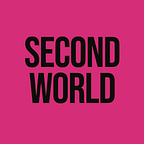PARA Method for Organizing Your Content
Article Updated: 12 Sep 2023
There are several ways to organize your digital information, if you’re looking for a more structured approach to this topic.
One of the more action-based options is the PARA methodology (or GAPRA as one of its variations). It recommends structuring your information based on its actionability.
See in details:
Projects are full of actionable information and heavily operate with deadlines (See the example types of content it may cover in the right pane):
Areas — or Areas of Focus — is where you have some Standards of Quality to be maintained. No specific deadlines. Essentially, Areas require some regular actions but don’t have an end date.
Then there are Resources, which are purely reference information with no actions whatsoever.
And finally — Archive, where you put obsolete information from the previous 3 groups.
This structure is pretty universal, so theoretically it should be possible to apply it not only to your Notes, but also to the Files and other types of content as well.
PARA Strengths
That said, the PARA framework possesses several strong points for its vast popularity and success in Personal Knowledge Management systems globally.
- It is pretty straightforward and easy to understand.
- It is elementary to adopt
- It relies on Folders, so it can be applied to the vast majority of the tools and apps out there.
- It can provide better structure while staying quite universal to be applied globally throughout your systems.
- It suggests reasonable differentiation between the content (but with some caveats; see below).
PARA Weaknesses
But, while having several clear advantages and being very easy to comprehend, the PARA framework’s weaknesses prevented me from fully adopting it.
- Folder-based structure is both its strength and a weakness. Personal knowledge and digital information management overall often require something more sophisticated than folders.
- PARA is not entirely MECE — there are overlaps in this structure. People need to take care of this “overlap burden” in their own individual structures. And that’s why 3. -
- You hear many people have a hard time differentiating Projects vs. Areas or even Areas vs. Resources. Logically, each Area can have its own Projects, Resources related to it, and, obviously, Archive.
- PARA doesn’t explain relations between Projects and Resources. Resources, while we talk about static reference information, can be related to multiple Projects or Areas. To me, Projects’ outcomes have to become Resources.
- Archive — not very productive, as when you put things in there, the structure disappears (all your Projects, Areas, and Resources become “one”).
- There’s no place for Ideas, Planning or Goal Setting in this framework — something very important to me personally in the information management.
While PARA is unquestionably one of the better ways to approach digital information management, creating a universal system is not easy.
A universal system has to be broad enough to work everywhere, but it also has to be specific to be helpful. That’s why if you’re willing to succeed and maximize your effectiveness in this domain, you will have to invent a structure tailored to your needs. And indeed, why not base it on some of the available best practices?
